Understanding ReSound Hearing Aids
ReSound is a part of the GN Group with headquarters in Ballerup, Denmark. The GN Group has been creating hearing solutions for medical and consumer markets for almost 150 years.
As one of the five largest hearing aid manufacturers in the world, ReSound sells their products in more than 80 countries around the world.
ReSound terms their approach to hearing aids “Smart Hearing Technology”. This philosophy centers around four pillars to treating hearing loss:
- Audiology: Engineering amplification solutions that overcome the challenges of hearing loss.
- Connectivity: Hearing aids connect to accessories with 2.4 GHz technology. ReSound also offers direct streaming via Bluetooth to smart phones.
- Apps: Apps that are available for smart phones allow consumers to manage their hearing aids and experience tinnitus relief.
- Design: Offering products with discrete designs that people will want to wear.
In line with this philosophy, ReSound introduced in 2010 its proprietary 2.4 GHz technology for direct connection of hearing aids to accessories. Hearing aids at this time needed a separate intermediary device worn around the neck, called a “streamer”, in order to connect wirelessly to external device.
In 2014, ReSound launched the first “Made for iPhone” hearing aids that allowed users to stream audio from phone calls and music from iPhones directly into personal hearing devices. The current ReSound hearing aids are called the LiNX Quattro and represent the 4th generation “Made for iPhone” hearing aids. Android streaming is available as well in the current product, however, has limitations.
The current top-level technology offered by ReSound is the LiNX Quattro, introduced in 2018. This release incorporated a new chipset with more memory, higher processing speed, a larger input dynamic range, and a wider bandwidth than previous models. It promises lower battery consumption than previous generations of ReSound hearing aids. Rechargeable models of the LiNX Quattro feature ReSound’s first integrated lithium ion battery.
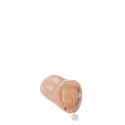
IIC
Invisible-in-Canal
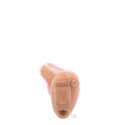
CIC
Completely-in-Canal
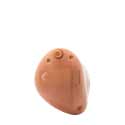
ITC
In-the-Canal
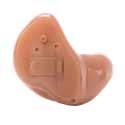
ITE
In-the-Ear
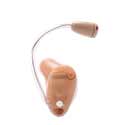
MIH
Mic-in-Helix

RIE
Receiver-in-Ear
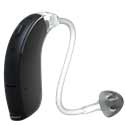
BTE
Behind-the-Ear
Key features of LiNX Quattro hearing aids:
New processing chip. 100 percent more speed, twice the memory, and 30% more computing power.
Improved Input Dynamic Range. Increased up to 116 dB, which provides less distortion to loud sounds.
Binaural Directionality III. This is the term for ReSound’s directional microphone system. Information from both hearing aids are combined (ear-to-ear) to determine the directional microphone configurations that are needed to optimize speech understanding in background noise.
Spatial Sense technology. Improved bandwidth up to 9.5 kHz and improvement with wireless signal for enhanced ear-to-ear communication, which allows improvement in the spatial sense technology. This technology aims to replace cues for sound localization that can be lost when hearing aid microphones are placed behind the ear.
Noise Tracker II. ReSound’s noise reduction technology works to make it more comfortable for the user to listen in noisy situations.
Wind Guard. This system works to reduce wind noise that a user may experience outdoors or while driving a car.
Impulse Noise Reduction. When the user is around sharp sounds such as dishes clanging or the blow of a hammer, impulse noise reduction helps to reduce the sound so that the user’s listening experience is more comfortable.
Sound Shaper. For users who have severe to profound hearing loss in higher frequencies along with much better hearing in the low to mid frequencies, Sound Shaper can shift higher frequency sounds towards the lower end of the frequency spectrum.
Tinnitus Sound Generator. With guidance from the audiologist, patients can select soothing sounds to help distract from ringing in the ears (tinnitus).
Audio Streaming. Receiver-in-ear (RIC) and most custom models can stream via Bluetooth to iPhones and many Android devices. For the first time, a ReSound completely-in-the-canal (CIC) hearing aid may utilize Bluetooth.
Nanotech coating. The nanotech coating protects RIC devices from dust and moisture. RIC devices have a IP68 rating for dust and water ingress.
Rechargeability. It has an integrated Li-ion battery which provides 30 hours of use on a full charge if the user does not stream. With streaming 50 percent of the time, the battery lasts 24 hours. A full charge takes just 3 hours. For added convenience when away from charging outlets, the charger base holds three full charges.
Wireless Accessories. The TV streamer connects hearing aids directly to the television. There are also remote microphones available for improved listening in noisy environments. Some users may prefer to control their hearing aids with wireless remote controls.
RIE and BTE colors

Quattro models are available in three levels: 9, 7, or 5. 9 is most advanced, 7 is the mid-level technology, while 5 is the most basic.
The graph below highlights the differences between hearing aids and does not list the features that are shared.
 |
LiNX Quattro 9 |
LiNX Quattro 7 |
LiNX Quattro 5 |
| Channels |
17 channels |
14 channels |
12 channels |
| Directionality |
Binaural Directionality III |
Binaural directionality |
Natural Directionality II |
| Spatial Sense |
Maximum |
Not Offered |
Not Offered |
| Noise Tracker II |
Maximum |
Advanced |
Basic |
| Smart Gain Reduction |
Binaural Environmental Optimizer II |
Environmental Optimizer |
Not Offered |
| Wind Reduction |
Maximum |
Advanced |
Basic |
| Impulse Noise Reduction |
Maximum |
Maximum |
Not Offered |
| Expansion |
Maximum |
Advanced |
Basic |
| |
LiNX Quattro 9 |
| Channels |
17 channels |
| Directionality |
Binaural Directionality III |
| Spatial Sense |
Maximum |
| Noise Tracker II |
Maximum |
| Smart Gain Reduction |
Binaural Environmental Optimizer II |
| Wind Reduction |
Maximum |
| Impulse Noise Reduction |
Maximum |
| Expansion |
Maximum |
| |
LiNX Quattro 7 |
| Channels |
14 channels |
| Directionality |
Binaural directionality |
| Spatial Sense |
Not Offered |
| Noise Tracker II |
Advanced |
| Smart Gain Reduction |
Environmental Optimizer |
| Wind Reduction |
Advanced |
| Impulse Noise Reduction |
Maximum |
| Expansion |
Advanced |
| |
LiNX Quattro 5 |
| Channels |
12 channels |
| Directionality |
Natural Directionality II |
| Spatial Sense |
Not Offered |
| Noise Tracker II |
Basic |
| Smart Gain Reduction |
Not Offered |
| Wind Reduction |
Basic |
| Impulse Noise Reduction |
Not Offered |
| Expansion |
Basic |